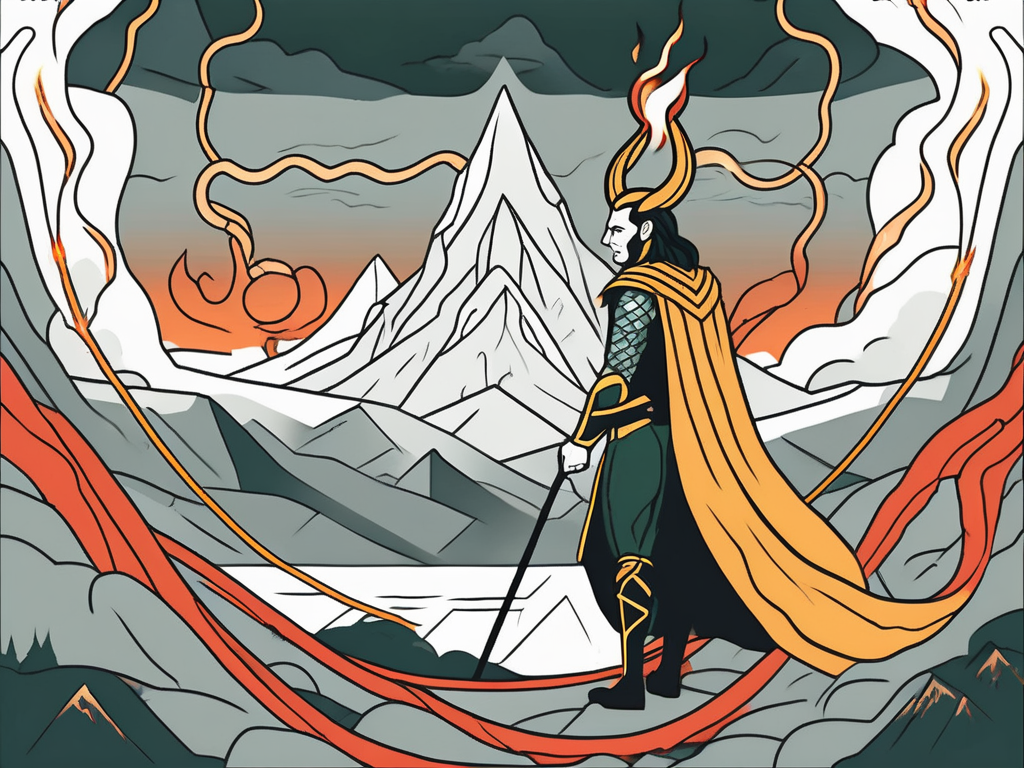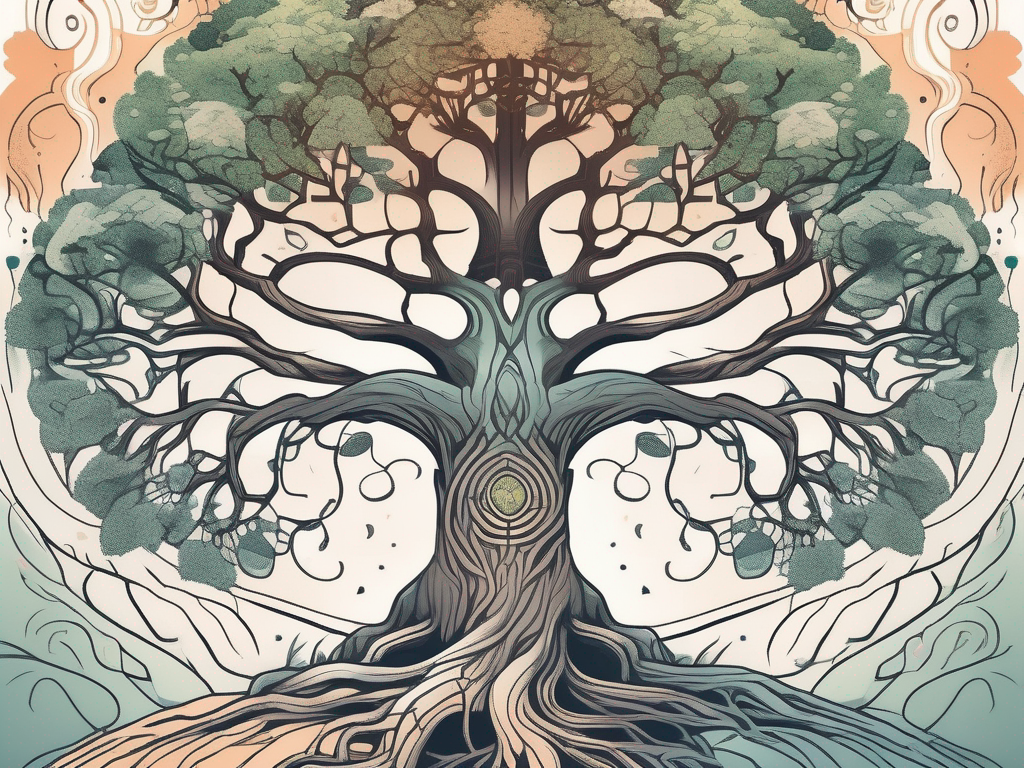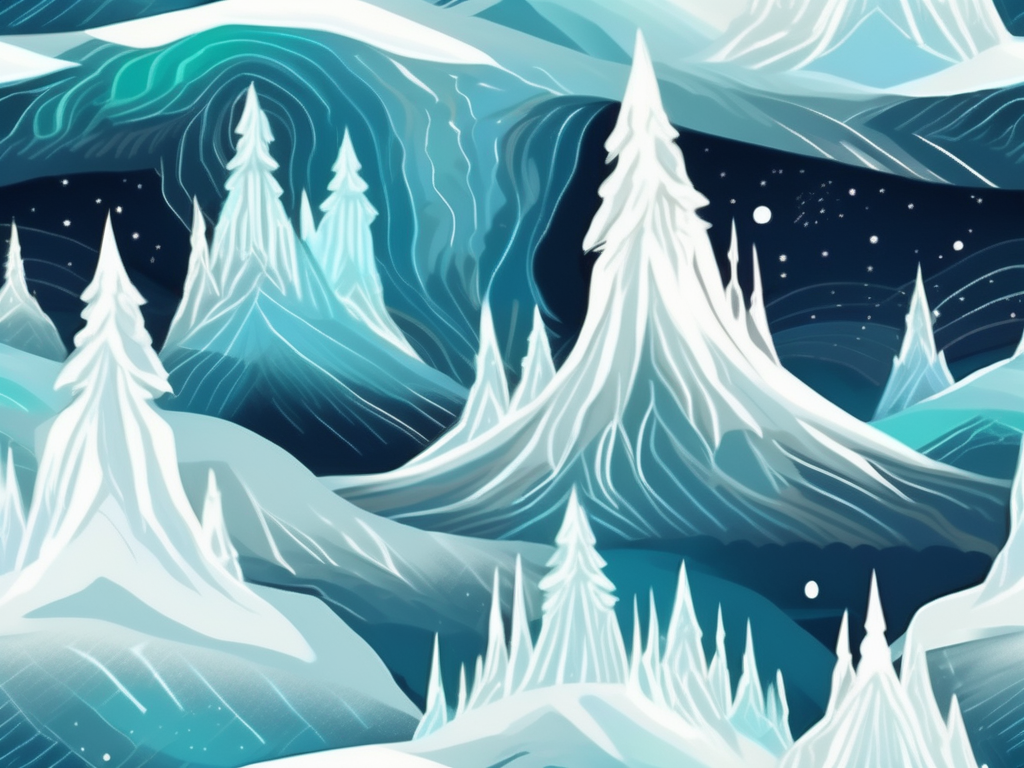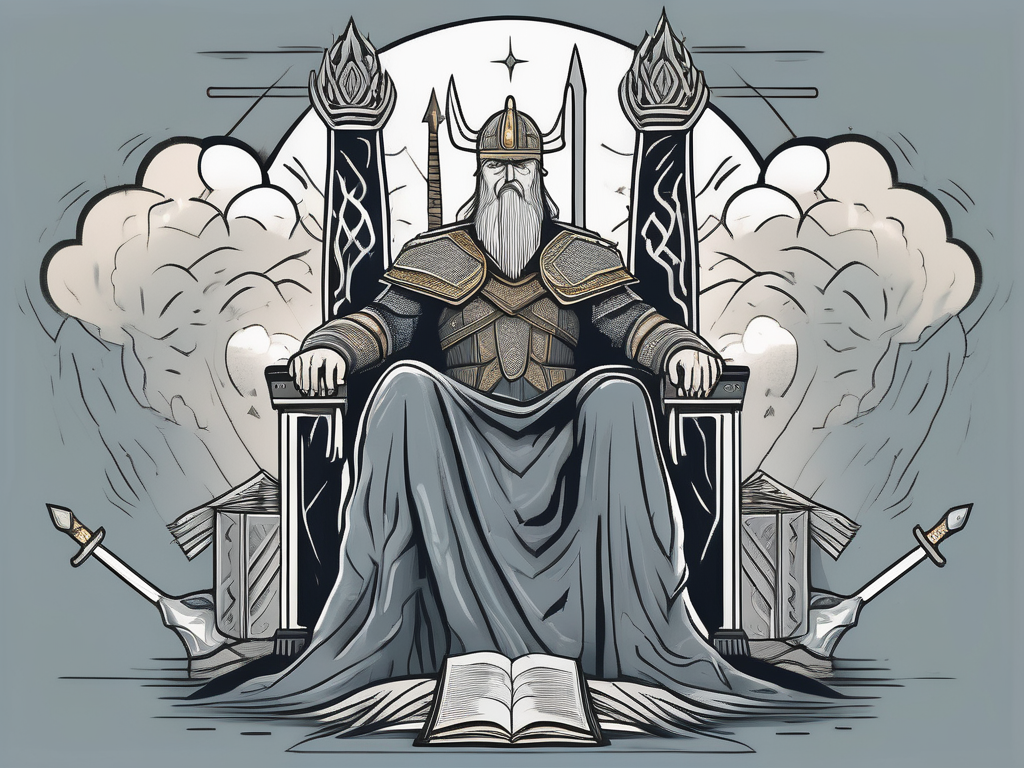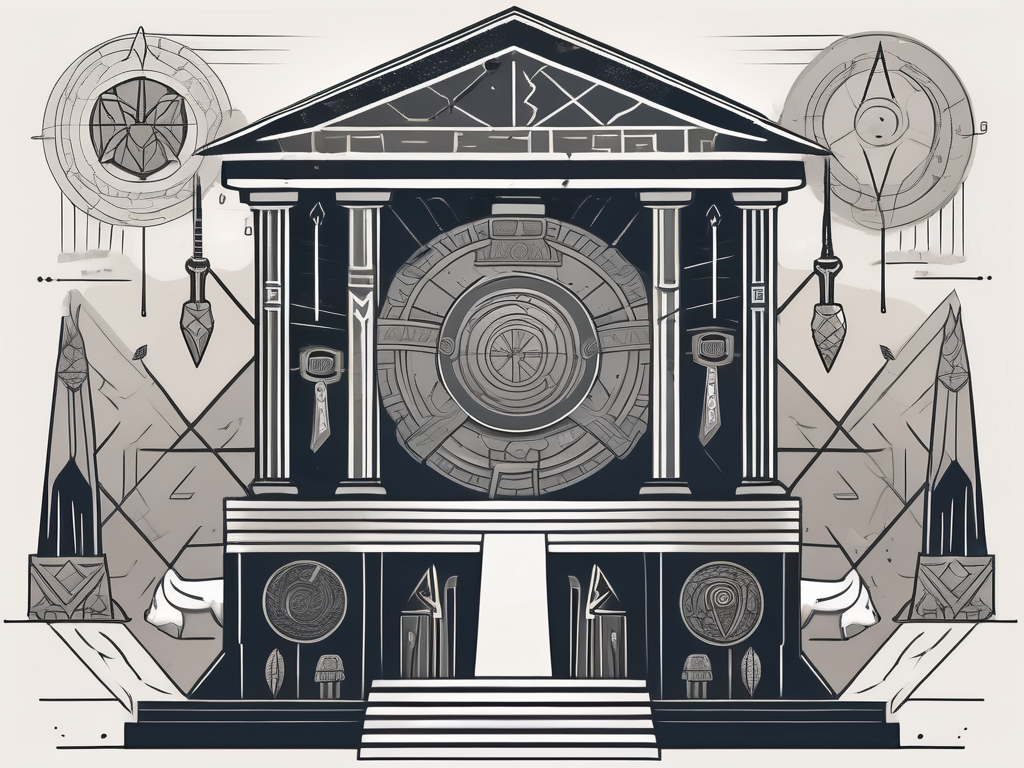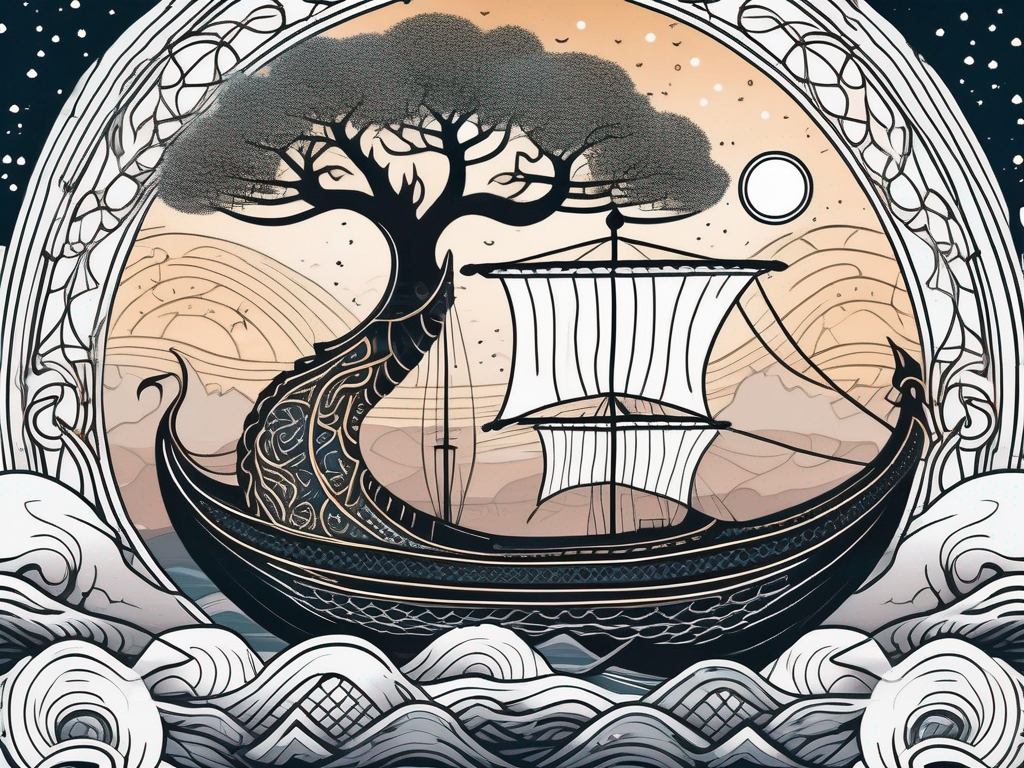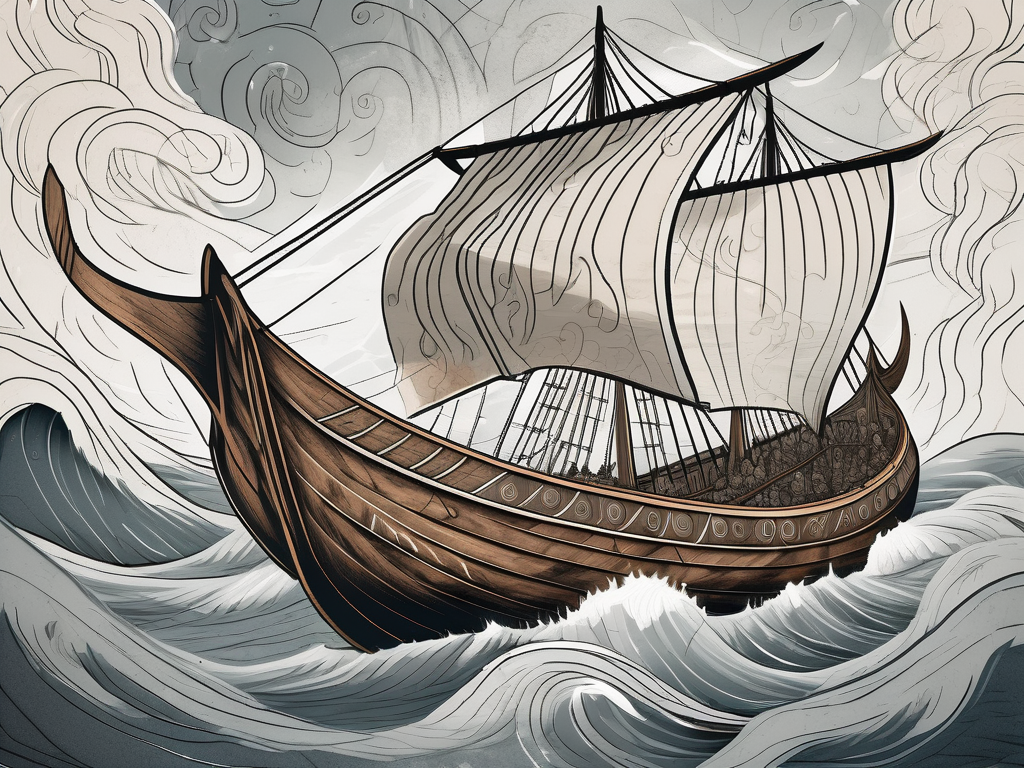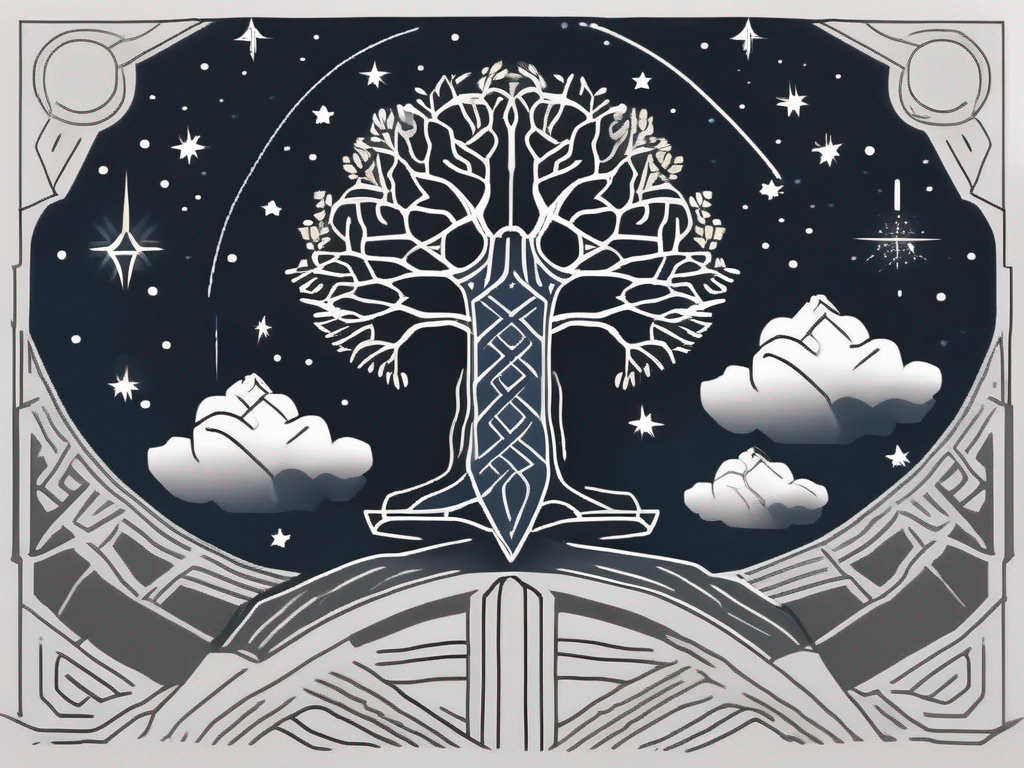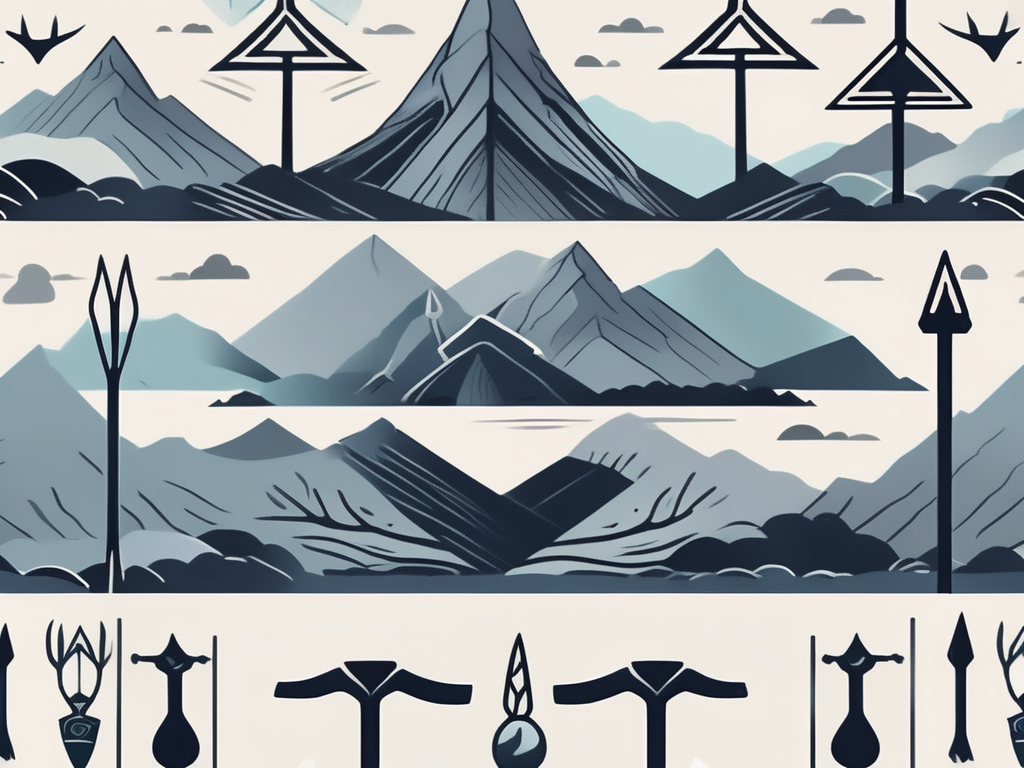The world of Norse mythology is filled with captivating tales of gods and goddesses, mythical creatures, and epic battles. From the mighty Odin to the mischievous Loki, from the goddess of love and war Freya to the fearsome giants of Jotunheim, there is no shortage of fascinating characters and stories to explore. In this article, we will embark on a journey through the realms of Norse mythology, uncovering the origins and influence of these ancient tales, delving into the roles of the gods and goddesses, and encountering the mythical creatures that roam these ancient lands.
Understanding Norse Mythology
Norse mythology refers to the religious beliefs and legends that were prevalent in the Germanic tribes of the Viking Age. These myths have been passed down through oral tradition, and although they were written down much later, they continue to captivate and inspire to this day. The Norse gods and goddesses were worshipped and revered by the Vikings, who believed that they played a crucial role in their everyday lives.
The tales of Norse mythology are rich in detail and complexity, filled with epic battles, heroic deeds, and intricate family dynamics. One of the most well-known figures in Norse mythology is Odin, the Allfather and king of the gods. Odin is often depicted as a wise and powerful figure, with his iconic spear Gungnir and his two ravens, Huginn and Muninn, who bring him information from all corners of the world.
Another prominent figure in Norse mythology is Thor, the god of thunder and strength. Thor is known for his mighty hammer Mjolnir, which he uses to protect both gods and humans from the forces of evil. He is often portrayed as a fierce warrior, with his red beard and his chariot pulled by two goats, Tanngrisnir and Tanngnjóstr.
The Origins and Influence of Norse Mythology
The roots of Norse mythology can be traced back to the ancient Germanic tribes, who shared similar religious beliefs and stories. These myths were eventually adopted and adapted by the Vikings, who added their own cultural influences to the tales. Norse mythology had a significant impact on Viking society, shaping their worldview and providing explanations for natural phenomena, moral guidelines, and a sense of identity.
One of the key aspects of Norse mythology is the concept of the nine realms. These realms make up the Norse cosmology and include Asgard, the realm of the gods, Midgard, the realm of humans, and Jotunheim, the realm of the giants. Each realm is interconnected and plays a specific role in the overall mythology, creating a complex and interconnected web of stories and characters.
The influence of Norse mythology can still be seen today in various forms of popular culture, from books and movies to video games and artwork. The tales of gods and heroes continue to inspire and captivate audiences, keeping the rich traditions of Norse mythology alive.
The Role of Mythology in Viking Society
Mythology played a central role in Viking society, influencing their religious practices, social structure, and even their warfare strategies. The gods and goddesses were believed to be constantly present in the lives of the Vikings, and rituals and sacrifices were performed to honor them. The myths also provided the Vikings with moral guidance, teaching them virtues such as bravery, loyalty, and honor.
One of the ways in which mythology influenced Viking society was through the concept of fate. The Vikings believed that their lives were predetermined by the Norns, three powerful female beings who controlled the destinies of gods and humans alike. This belief in fate gave the Vikings a sense of purpose and acceptance, as they saw themselves as part of a grand cosmic plan.
Furthermore, mythology played a crucial role in shaping the social structure of Viking society. The gods and goddesses were seen as the ultimate authority figures, and their actions and decisions served as a model for the behavior of the Vikings. Honor and loyalty were highly valued virtues, and individuals were expected to uphold these values in their interactions with others.
In addition to their religious and social significance, the myths also influenced the Vikings’ approach to warfare. The tales of heroic battles and divine intervention inspired the Vikings to be fearless warriors, willing to risk their lives in the pursuit of glory. They believed that by emulating the bravery and strength of the gods, they could achieve victory on the battlefield.
The Pantheon of Norse Gods
The Norse pantheon is filled with a diverse cast of gods and goddesses, each with their own unique characteristics and powers. Let’s explore some of the most prominent figures in this fascinating pantheon.
Odin: The Allfather
Odin, also known as Wotan, is the chief god of the Norse pantheon. He is associated with wisdom, knowledge, and war. Odin’s most famous attribute is his one-eyed appearance, a result of sacrificing his eye for a drink from the Well of Wisdom. He is often depicted as a wise old man, wearing a cloak and wielding a spear.
But there is more to Odin than meets the eye. He is not only the god of war, but also the god of poetry and magic. Odin is said to have discovered the runes, the ancient Norse alphabet, while hanging from the World Tree, Yggdrasil, for nine days and nights. This act of self-sacrifice shows the lengths Odin would go to acquire knowledge and power.
Furthermore, Odin is the ruler of Valhalla, the great hall of the fallen heroes. He gathers the bravest warriors who died in battle and brings them to his hall, where they feast and prepare for the final battle of Ragnarok. This aspect of Odin’s character showcases his role as a leader and protector of his people.
Thor: The Thunder God
Thor, the god of thunder and lightning, is one of the most popular and recognizable figures in Norse mythology. He is known for his strength and bravery, as well as his red beard and hammer, Mjolnir. Thor was often called upon by the Vikings for protection during battles and was also associated with fertility and agriculture.
But Thor’s role goes beyond being a mighty warrior. He is also the god of weather, controlling storms and rain. Farmers relied on Thor’s blessings for a successful harvest, and his thunderous presence was seen as a sign of his power and protection. Additionally, Thor’s hammer, Mjolnir, was not only a weapon but also a symbol of fertility, as it could bring forth rain and fertility to the land.
Thor’s adventures and battles against giants and other mythical creatures are legendary. His strength and courage are unmatched, and he is often depicted as a protector of both gods and humans. Despite his fierce nature, Thor is also known for his good-heartedness and sense of humor, making him a beloved figure in Norse mythology.
Loki: The Trickster God
No pantheon would be complete without a trickster god, and in Norse mythology, that role is filled by Loki. Often portrayed as a shape-shifter and a mischief-maker, Loki is both loved and feared by the gods and mortals alike. His mischievous deeds often lead to chaos and conflict, but he is also responsible for some of the most exciting and dramatic stories in Norse mythology.
Loki’s cunning and wit make him a master of deception. He is known for his ability to change his appearance, which allows him to trick both gods and mortals. Loki’s mischievous nature often gets him into trouble, but he is also a valuable ally when his cleverness is needed. Despite his unpredictable nature, Loki’s presence adds an element of excitement and unpredictability to the Norse pantheon.
One of Loki’s most infamous acts was his involvement in the death of Baldr, the god of light and beauty. Loki tricked Baldr’s blind brother, Hodr, into throwing a mistletoe dart at Baldr, which proved to be fatal. This act of betrayal led to Loki being bound by the gods until the end of days, when he will play a pivotal role in the events of Ragnarok.
Despite his mischievous and sometimes malicious actions, Loki is not entirely evil. He is a complex character, capable of both great harm and unexpected acts of kindness. Loki’s presence in the Norse pantheon adds depth and intrigue to the stories of the gods, making him an essential figure in Norse mythology.
The Norse Goddesses and Their Roles
While the gods often take center stage in Norse mythology, the goddesses play equally important roles in shaping the world of the Vikings. Let’s discover some of these powerful and influential goddesses.
Freya: The Goddess of Love and War
Freya, known as the goddess of love and war, is one of the most prominent figures in Norse mythology. She is associated with beauty, fertility, love, and magic. Freya is often depicted as a fearless warrior, wearing a cloak of falcon feathers and riding a chariot pulled by two giant cats.
Frigg: The Queen of Asgard
Frigg is the queen of the gods and the wife of Odin. She is associated with motherhood, domesticity, and wisdom. Frigg is often depicted as a nurturing and protective figure, and her role in Norse mythology is often tied to nurturing and caring for the world and its inhabitants.
Hel: The Goddess of the Underworld
Hel is the goddess of the underworld, ruling over the realm of the dead. She is often depicted as half-dead and half-alive, with a face and body that is half beautiful and half decayed. Hel is both feared and respected by the gods, and she plays a crucial role in the cycle of life and death in Norse mythology.
The Mythical Creatures in Norse Mythology
As we journey deeper into the world of Norse mythology, we encounter a variety of mythical creatures that add depth and intrigue to these ancient tales. Let’s meet some of them.
The Mighty Giants of Jotunheim
Jotunheim, the realm of the giants, is home to some of the most fearsome and powerful creatures in Norse mythology. These giants are often depicted as towering figures with immense strength and magical powers. They frequently clash with the gods and play a significant role in shaping the destiny of the Norse gods and the world they inhabit.
The Mysterious Dwarfs of Svartalfheim
The dwarfs, or svartalfar, are skilled craftsmen and miners who live in the realm of Svartalfheim. Known for their exceptional craftsmanship, the dwarfs are responsible for forging many of the magical weapons and treasures of the gods. They are also known for their secretive nature and are often seen as mischievous and cunning.
The Fearsome Dragons of Norse Lore
In Norse mythology, dragons are powerful and majestic creatures, often associated with wisdom and knowledge. They are guardians of valuable treasures and possess great intellect and magical powers. The most fearsome dragon of all is Jormungandr, a gigantic serpent that encircles the world and is destined to bring about Ragnarok, the ultimate battle between the gods and the forces of chaos.
As we conclude our exploration of the fascinating world of Norse gods and goddesses, we have encountered a rich tapestry of characters, stories, and mythical creatures. The tales of these ancient deities and their adventures continue to inspire and captivate us, offering a glimpse into a world where gods walked among mortals, and epic battles shaped the destiny of the universe. So, whether you are drawn to the wisdom of Odin, the strength of Thor, or the mysterious allure of Loki, Norse mythology has something to offer to everyone who seeks to uncover the mysteries of the past.

